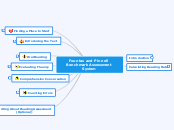Fountas and Pinnell
Benchmark Assessment System
Introduction
Calculating Reading Rate
Finding a Place to Start
Introducing the Text
1. Read title
2. Read the standardized introduction
Oral Reading
Evaluating Fluency
Comprehension Conversation
Move away from simple answer, so students stop thinking that purpose is to answer teachers questions correctly
Puropose is to gain behavioural evidence of a student's understanding.
Be sure student understands that it is expected that they are going to have a conversation
First conversation prompt is usually: "Talk about what you have learned in this book," or, "Talka bout what happened in the story."
Acceptable prompts: "Say more about that," "Tell more," "What else?" " Why?"
Your goal is to have the student hit on all 3 factes of comprehenshion: within the text, beyond the text, and about the text.
The better you know the book the easier it is to have a conversation with the student.
Good conversations have a back and forth quality, with some questions, but not a steady barage.
Scoring the Comprehension Conversation
Counting Errors
You need to use established guidlelines when scoring accuracy
Total the errors and self-corrections in each line of text separately
Count the errors by going down the column
Figure out the accuracy score
Use the accuracy rate bar
If score is below 95% you may want to stop the assessment and not begin the comprehension conversation
The number of self-corrections tells the teacher the extent to which a student is monitoring and noticing the errors they make.
